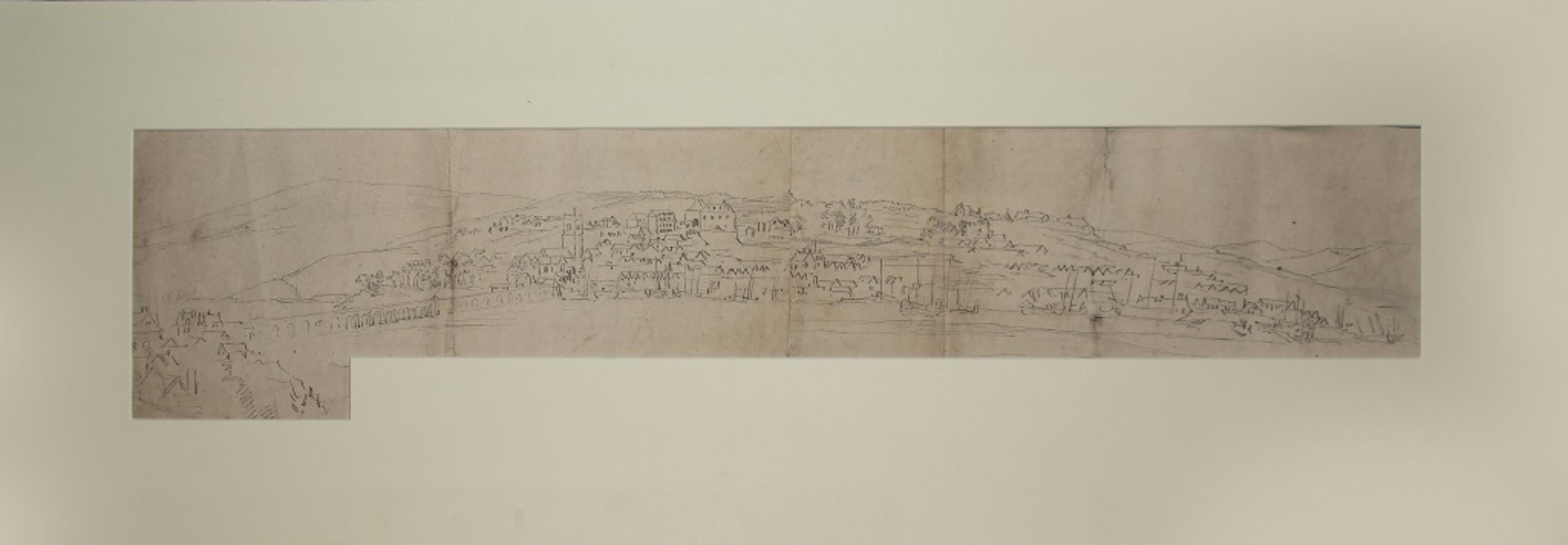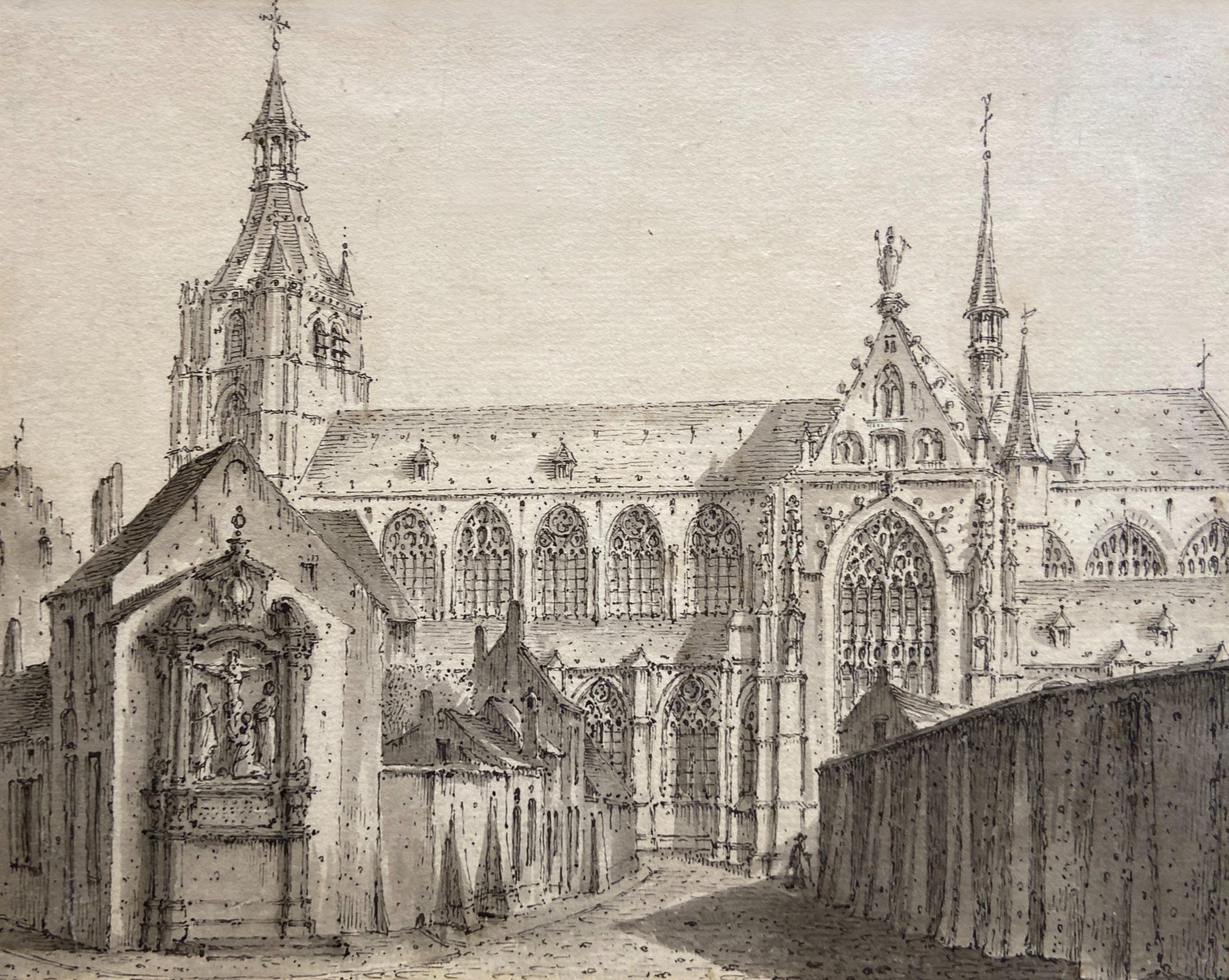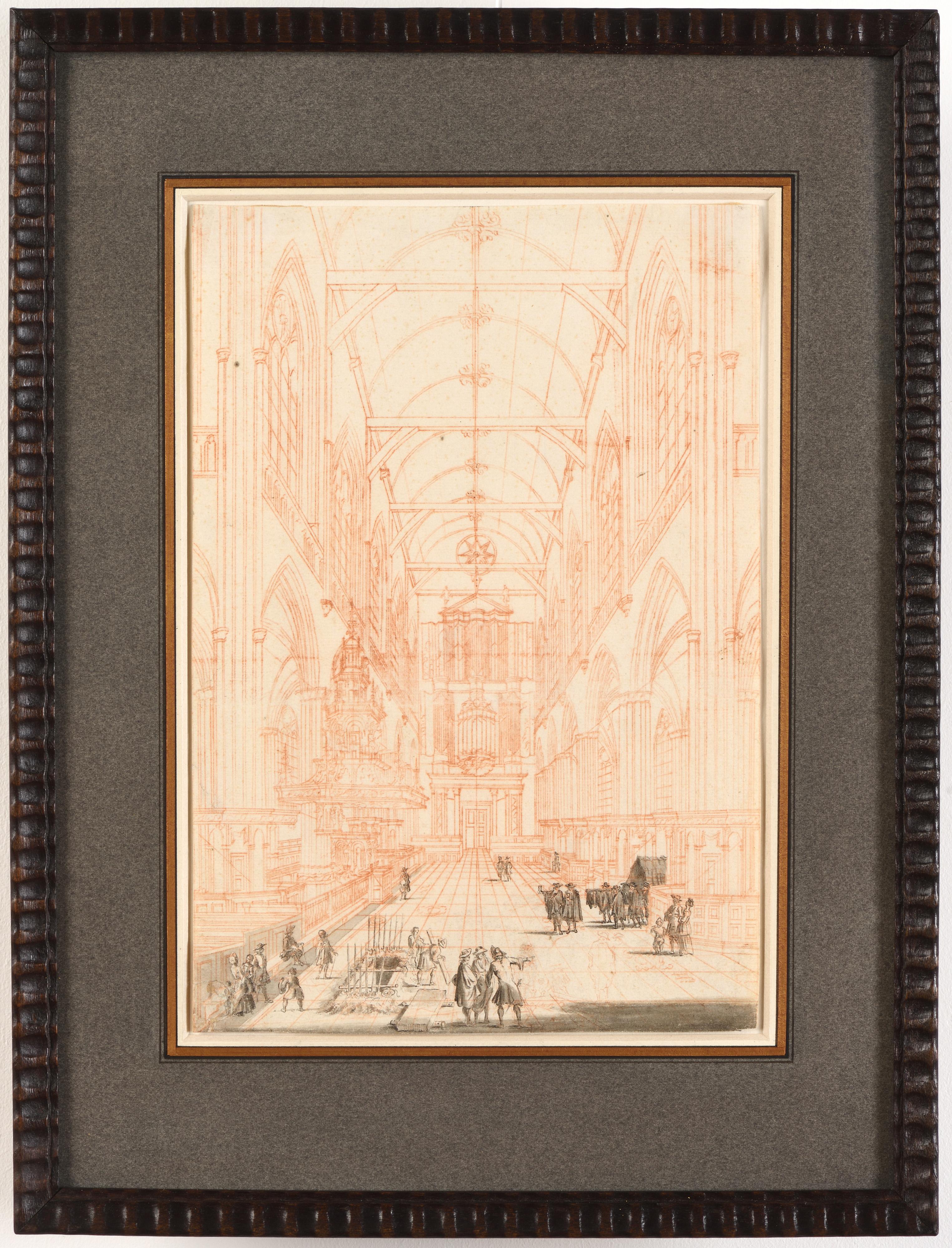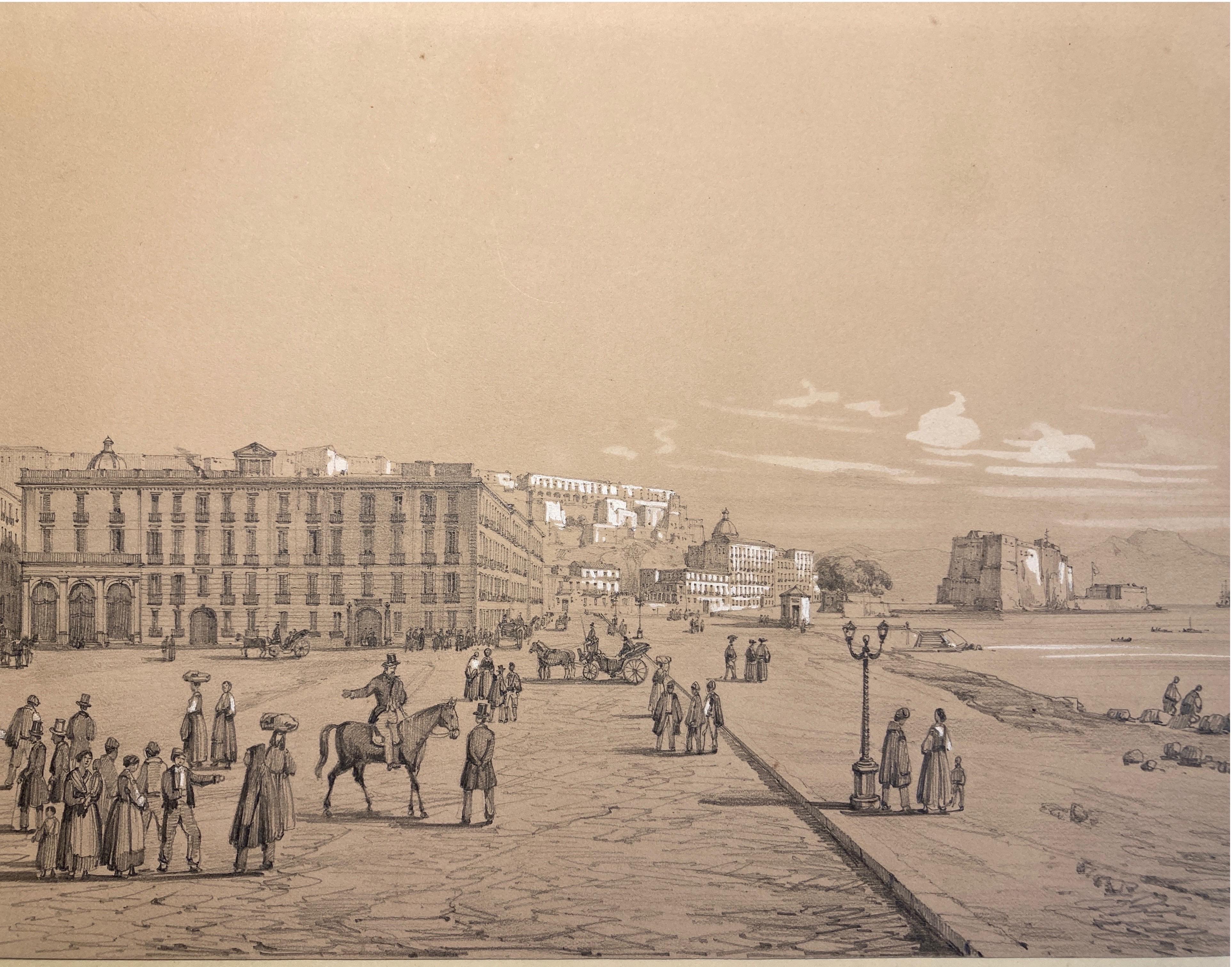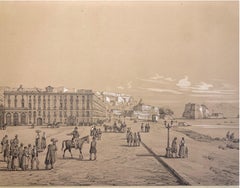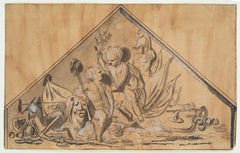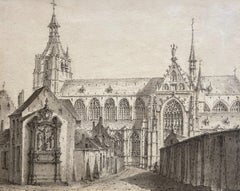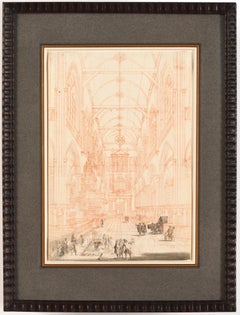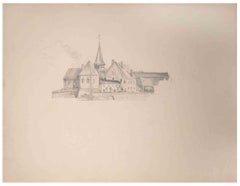Items Similar to Old Master Drawing, Westerkerk Keizersgracht in Amsterdam, 17th century, Dutch
Want more images or videos?
Request additional images or videos from the seller
1 of 21
Old Master Drawing, Westerkerk Keizersgracht in Amsterdam, 17th century, Dutchcirca 1670
circa 1670
$1,821.18
$2,276.4720% Off
£1,355.50
£1,694.3720% Off
€1,520
€1,90020% Off
CA$2,494.56
CA$3,118.2020% Off
A$2,774.49
A$3,468.1220% Off
CHF 1,448.75
CHF 1,810.9420% Off
MX$33,762.64
MX$42,203.3020% Off
NOK 18,502.81
NOK 23,128.5120% Off
SEK 17,352.37
SEK 21,690.4620% Off
DKK 11,571.23
DKK 14,464.0420% Off
Shipping
Retrieving quote...The 1stDibs Promise:
Authenticity Guarantee,
Money-Back Guarantee,
24-Hour Cancellation
About the Item
Jan van der Heyden (1637 Gorinchem - 1712 Amsterdam), attributed.
Old Master Drawing, Westerkerk Keizersgracht in Amsterdam, 17th century, Dutch
Westerkerk and Keizersgracht in Amsterdam
Backside: later drawn backside with village church of the 18th century
Chalk and pen on paper
23,5 x 18,5 cm
Preliminary drawing for a painting from the creative period c. 1667 - 1670. This painting has been published a few years ago by Peter C. Sutton in the catalogue raisonné of the artist.
Van der Heyden was initially a pupil of a glass painter, but later turned exclusively to architectural painting and went to Amsterdam, where he painted views of churches, castles, palaces, public squares, streets, canals, etc., most of which are richly decorated with staffage. In addition, van der Heyden was also active as an inventor, for example, he developed a street lighting system for Amsterdam by means of oil street lamps, which was in operation from 1669 to 1840. After a stay in London, he painted the London fire of 1666, which he either witnessed himself or had seen the consequences of. Certainly influenced by this, he did much to further the technical and organisational development of the fire brigade from 1669 onwards. His greatest invention was probably the fire hose, which enabled significant improvements in fire-fighting technology and tactics. He also improved the hand-operated fire engines of the time by making them smaller, more mobile and more powerful, and he developed the series connection of several pumps to increase the pressure in order to achieve a greater range for the water jet. In 1690, together with his son, he was the author and illustrator of the Brandspuiten-boek, the first manual for fire fighting.
Johann Lingelbach, Adriaen van de Velde and Eglon van der Neer often painted the figures in his clear and friendly coloured pictures. The same can be found in many public galleries. One of his main works, the view of the town house in Amsterdam on Dam Square (from 1668), is in the possession of the Louvre in Paris.
Van der Heyden worked for a time in England, also dealing with mechanics, and published a treatise on the subject in 1690 with his own drawings. He was a very versatile engineer and inventor and is regarded as the Leonardo da Vinci of the Netherlands. He developed, built or worked on polder windmills (for drainage), water wheels, heating systems and flood and dike protection. He also built the beacon on the tower of IJdoorn on the Zuiderzee around 1700.
- Attributed to:Jan van der Heyden (1637 - 1712, Dutch)
- Creation Year:circa 1670
- Dimensions:Height: 9.26 in (23.5 cm)Width: 7.29 in (18.5 cm)
- Medium:
- Movement & Style:
- Period:
- Condition:
- Gallery Location:Greven, DE
- Reference Number:1stDibs: LU155027953742
About the Seller
4.8
Gold Seller
Premium sellers maintaining a 4.3+ rating and 24-hour response times
Established in 2011
1stDibs seller since 2021
29 sales on 1stDibs
Typical response time: 6 hours
- ShippingRetrieving quote...Shipping from: Greven, Germany
- Return Policy
Authenticity Guarantee
In the unlikely event there’s an issue with an item’s authenticity, contact us within 1 year for a full refund. DetailsMoney-Back Guarantee
If your item is not as described, is damaged in transit, or does not arrive, contact us within 7 days for a full refund. Details24-Hour Cancellation
You have a 24-hour grace period in which to reconsider your purchase, with no questions asked.Vetted Professional Sellers
Our world-class sellers must adhere to strict standards for service and quality, maintaining the integrity of our listings.Price-Match Guarantee
If you find that a seller listed the same item for a lower price elsewhere, we’ll match it.Trusted Global Delivery
Our best-in-class carrier network provides specialized shipping options worldwide, including custom delivery.More From This Seller
View AllView of Castle of Vianen, Batestein, Dutch Golden Age, Schouman, Old Master Art
By Aert Schouman
Located in Greven, DE
Though he is most celebrated today for his extraordinary work as an artist of ornithological and zoological subject matters, Schouman was also a prolific documenter of landscape in his native Holland. The present drawing, which depicts a view of the Castel of Vianen, fits securely into a corpus of drawings Schouman produced on the same scale and in the same distinctive combination of media, examples of which are today housed in the collection of the Koninklijk Zeeuwsch Genootschap der Wetenschappen, Middelburg.
Castle Batestein (also called Batenstein ) is a castle disappeared from the Netherlands . It was built on the banks of the Lek in the small town of Vianen, then in the province of South Holland (now in the province of Utrecht ).
The castle was burned down in 1696 and then demolished. Remains only the Hofpoort (or castle gate...
Category
18th Century Baroque Landscape Drawings and Watercolors
Materials
Handmade Paper, Pen
Old Master Drawing, View of Naples, 18th Century, Italian School
Located in Greven, DE
Italian Artist; Detailled and impressive old master drawing with the view Naples. Very fine Drawing with white heighting.
Category
19th Century Romantic Figurative Drawings and Watercolors
Materials
Paper
Old Master Drawing, Baroque, Jacob de Wit, Allegory of Victory, Putti, Ships
By Jacob De Wit
Located in Greven, DE
Two putti with symbols of war and victory (cannons, cannonballs, armour, anchor, lion's head, laurel branch/ olive branch, flag, staff with helmet) in pediment triangle.
Probably a d...
Category
Late 17th Century Baroque Figurative Drawings and Watercolors
Materials
Paper, Crayon
$2,179 Sale Price
35% Off
Flemish School, Portrait Young Boy, Old Master Drawing, Baroque, 17th Century
Located in Greven, DE
Old Master Drawing, Flemish School, Portrait or Sketch of a standing young boy. Condition : see photos
The drawing is on paper.
Category
17th Century Baroque Figurative Drawings and Watercolors
Materials
Crayon, Paper
Old Master Drawing, 17th Century, Italian Art, Peace, Allegory, Love, Dove
Located in Greven, DE
Oak Leaf Peace Wreath with Dove and Serpent
Around 1700
Black chalk on thin, brownish paper
39,8 x 52,7 cm
Inscribed "N" in the centre left
This drawing is probably by an Italian Ar...
Category
17th Century Baroque Animal Drawings and Watercolors
Materials
Paper, Chalk
$383 Sale Price
20% Off
Old Master Drawing, Roccoco, 18th Century, German Artist, Animal Drawing
By Johann Martin Metz
Located in Greven, DE
Black chalk, partly washed, on paper, sheet 27.5 x 19.7 cm
Plain gold moulding, 44.8 x 36 cm
The Rhenish still life painter Johann Martin Metz was ...
Category
18th Century Rococo Animal Drawings and Watercolors
Materials
Paper, Crayon
$766 Sale Price
20% Off
You May Also Like
Landscape - Pencil Drawing by J. P. Verdussen - Mid-18th Century
By Jan Peeter Verdussen
Located in Roma, IT
Landscape is a beautiful drawing in pencil on ivory-colored paper realized by Jan Peter Verdussen.
The artwork has some folds and foxings. The artwork represents a landscape.
Inclu...
Category
Mid-18th Century Modern Figurative Drawings and Watercolors
Materials
Pencil
View of a Cathedral, 17th Century Dutch Ink and Wash Artwork, Mounted
Located in London, GB
Ink and wash on paper
Image size: 7 1/2 x 6 inches (19 x 15.25 cm)
Mounted
This drawing is of a Gothic style church in the Netherlands that is likely to have been built in the 15th ...
Category
17th Century Landscape Drawings and Watercolors
Materials
Paper, Ink
Interior of the Nieuwe Kerk, Amsterdam
Located in Paris, Île-de-France
Jan Goeree (Middelburg 1670 – Amsterdam 1731)
Interior of the Nieuwe Kerk, Amsterdam (c. 1724)
Red chalk for the architecture, pen and black ink, grey wash on paper
Composition reversed in preparation for engraving
25 × 17.5 cm
Watermark: Hunting horn, Churchill 318 (dated 1724)
Unsigned
Provenance
Private collection, France
Context & Attribution
Trained in the studio of Gérard de Lairesse, Jan Goeree was among the finest Dutch engravers of the early eighteenth century, celebrated for his architectural views of Amsterdam. This drawing is a preparatory study for an engraving of the same subject now preserved in a major public collection. The final print—slightly larger—closely follows the reversed composition of this sheet.
Subject
In the center of the Gothic nave, five bearers carry a catafalque toward a freshly dug grave—a tribute to the naval heroes often buried in the Nieuwe Kerk. This funerary motif, familiar from Dutch painting (e.g. Emanuel de Witte, 1657), evokes the vanitas theme and the transience of earthly life.
Technical Analysis
Goeree’s use of red chalk for the architecture and ink for the figures reveals his working method: the chalk lines could be used to produce a counterproof restoring the correct orientation of the architecture, while the inked figures remained adjustable before the design was transferred to the copper plate.
Place within the Oeuvre
Drawings of church...
Category
Early 18th Century Old Masters Interior Drawings and Watercolors
Materials
Ink, Chalk
Ancient City - Drawing - Early 20th Century
Located in Roma, IT
Ancient City is a drawing realized in the Early 20th Century by an unknown french master.
Pencil on paper.
In good conditions.
The artwork is represented through deft strokes mast...
Category
Early 20th Century Modern Figurative Drawings and Watercolors
Materials
Pencil
Ancient View of Amstel - Original Lithograph on Paper - Early 19th Century
Located in Roma, IT
View on the Amstel is an original modern artwork realized in Italy in the first half of the 19th Century.
Original Lithograph on Ivory Paper.
Inscripted on the lower margin: View...
Category
Early 19th Century Modern Figurative Prints
Materials
Lithograph
Landscape - Original Pencil Drawing by J. P. Verdussen - Mid-18th Century
By Jan Peeter Verdussen
Located in Roma, IT
Landscape is an original drawing in pencil on ivory-colored paper realized by Jan Peter Verdussen.
The artwork has some folds rips and foxings and is repaired on the middle line.
T...
Category
Mid-18th Century Modern Figurative Drawings and Watercolors
Materials
Pencil
More Ways To Browse
Technical Drawing
Holland House
Antique Architectural Drawings
Dutch Masters Paintings
Antique 17th Century Dutch
Old Amsterdam
Old Dutch Paintings
Dutch Paintings Old Master
Dutch Painting 17th Century
Small Dutch Paintings
Dutch Oil Paintings 17th Century
Dutch Fire
Dutch Master Paintings 17th Century
17th Century Dutch Landscape
Church Architectural Drawings
18th Century Dutch Paintings
18th Century Painting Dutch
Dutch Landscape Oil Painting Small
